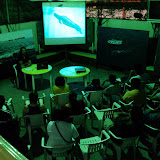Merry Christmas around the world
Afrikaner (Afrikaans) ~ "Een Plesierige Kerfees"
Argentine ~ "Felices Pascuas"

Bohemian ~ "Vesele Vanoce"Brazilian ~ "Boas Festas"
Chinese (Cantonese) ~ "Saint Dan Fai Lok"
Danish ~ "Glædelig Jul"
Dutch ~ "Vrolijk Kerstfeest" - Gezellige kerst
English ~ "Merry Christmas"
Filipino ~ "Maligayang Pasko"
Finnish ~ "Hyvaa Joulua"
French ~ "Joyeux Noël"
German ~ "Froehliche Weihnachten"
Greek ~ "Kala Christouyenna"

Hawaiian ~ "Mele Kalikimaka"
Hebrew ~ "Mo'adim Lesimkha"
Icelandic ~ "Gledileg Jol"
Indonesian ~ "Selamat Hari Natal"
Irish ~ "Nollaig Shona Dhuit"
Italian ~ "Buone Feste Natalizie" - Natale italiano
Japanese ~ "Kurisumasu Omedeto"
Korean ~ "Sung Tan Chuk Ha"
Lithuanian ~ "Linksmu Kaledu"
Malay ~ "Selamat Hari Natal"
Maori ~ "Meri Kirihimete"
Norwegian ~ "God Jul" - Norsk Jul
Romanian ~ "Craciun Fericit"
Peruvian ~ "Felices Fiestas"
Portugese ~ "Boas Festas"
Slovakian ~ "Vesele Vianoce"
Spanish ~ "Feliz Navidad"
Swedish ~ "God Jul" - Jul i Sverige
Welsh ~ "Nadolig Llawen"

Christmas Facts
Every year more than 400 million people celebrate Xmas around the world -- that makes Xmas one of the world’s biggest religious and commercial festivities. In approximately year 300 A.D., the birthday of Jesus was determined to be on December 25, the day that has been celebrated from then till this very day. The celebration on the 25th of December starts with Christmas Eve, the evening of December 24.
The religious festival is originally a blend of pagan customs. The Romans held a festival on December 25 called Dies Natalis Solis Invicti, i.e. "the birthday of the unconquered sun.". Pagan Scandinavia celebrated a winter festival called Yule, held in late December to early January. However, it is uncertain exactly why December 25 became associated with the birth of Jesus since the Old Testament doesn’t mention a specific date of the event.
Christmas around the world:

In Italy, children receive gifts from the good witch La Befana, old, bent and dressed in black. La Befana was a widowed, childless woman when the Three Kings passed on their way to see the Christ child. When they asked her the way to Bethlehem she was busy cleaning and sent them away. Realizing her mistake, she left to search for the Baby Jesus. To this day she is still searching going from house to house on Epiphany, January 6, leaving a gift for good children.
Russian children await gifts from Babouska, a farmer's wife who offered food and shelter to the Three Wise men on their journey to Bethlehem, Baboushka declined their offer of travelling with them to visit the Christ child. Realizing her error on the eve of Epiphany, she tried unsuccessfully to find them, but handed the presents she had intended for the infant Jesus to children she passed along the way.
In Spain, Mexico, Puerto Rico and South America, the Three Kings or Wise Men bring Christmas gifts to children, while in France children eagerly await the coming of Father Christmas or Pere Noel who brings their gifts.
In some cultures, Saint Nicholas travels with an assistant. The old bishop Sinterklass arrives in Holland on December 6 in his red bishop's costume astride a white horse. In many port towns, he is said to have sailed in on a ship from Spain. Beside him walks Black Peter with a black sack and a book recording each Dutch child's behavior through the year. Good children receive a gift from the bishop while bad children may be carried away in Black Peter's sack.
In Germany Saint Nicholas also travels with a helper, known as Knecht Ruprecht, Krampus, or Pelzebock, and comes with a sack on his back and a rod or switches in his hand. Saint Nicholas gives gifts to good children, while those who have been bad are punished by the assistant with a few hits of a switch.
Swedish children wait for the gnome Jultomten, also called Julemanden or Julenisse, who dresses in red and carries a sack of gifts on his back. He flies in his sleigh pulled by the Julbocker, the goats of Thor, the god of thunder. Elves, called the Juul Nisse, hide in the attics of families throughout the year, eagerly waiting to help him. Children leave bowls of milk or rice pudding in the attic for the elves, hoping they will be empty in the morning.
In Austria and Switzerland it is Christkindl or the Christ Child who arrives bearing gifts. In some towns children await the Holy Child and in others Christkindl is a beautiful girl-angel who comes down from heaven bearing gifts.
And in England a thinner version of Santa Claus known as Father Christmas, wearing long red robes with sprigs of holly in his hair, delivers gifts to children.



































